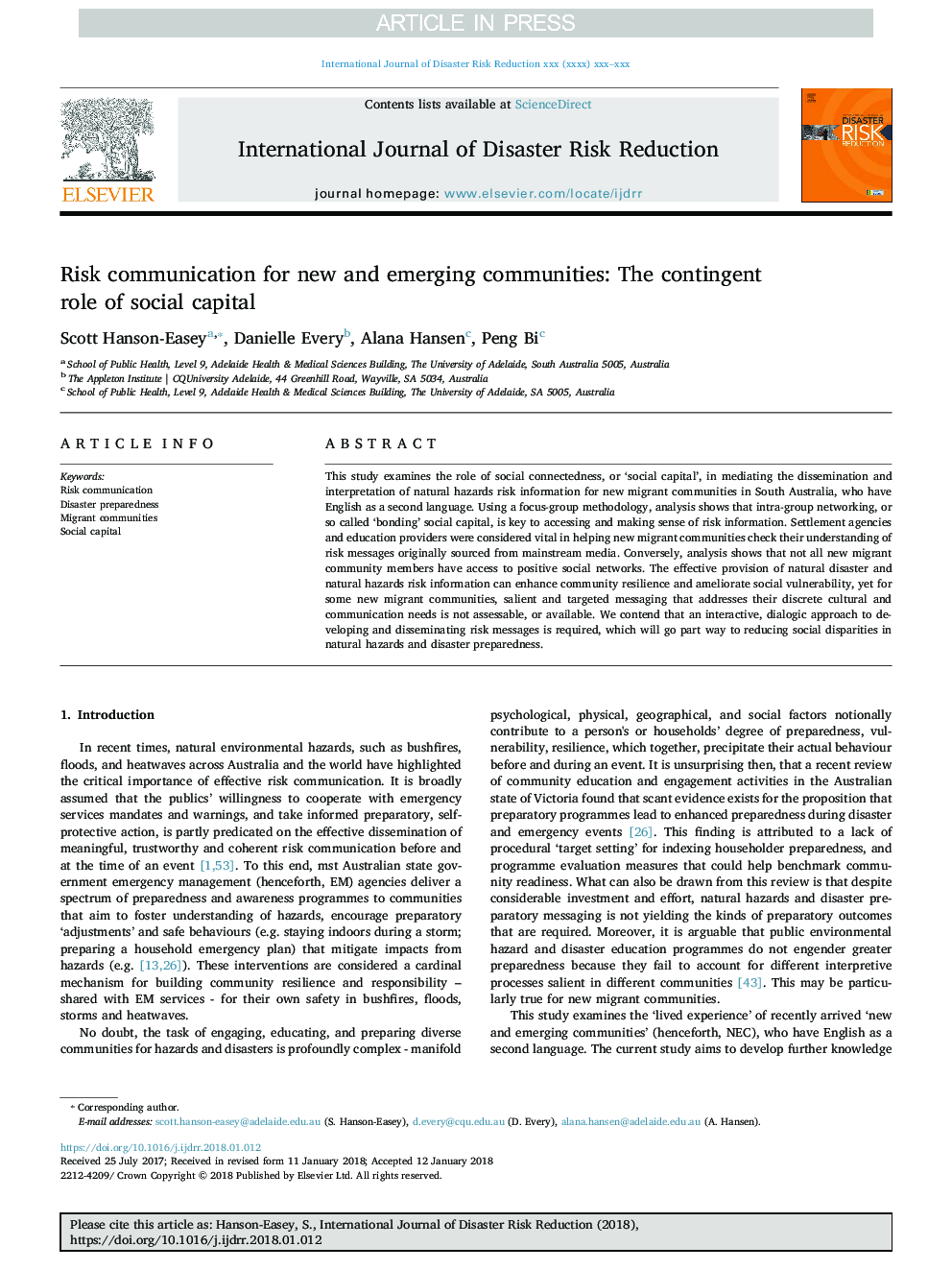| Article ID | Journal | Published Year | Pages | File Type |
|---|---|---|---|---|
| 7471743 | International Journal of Disaster Risk Reduction | 2018 | 9 Pages |
Abstract
This study examines the role of social connectedness, or 'social capital', in mediating the dissemination and interpretation of natural hazards risk information for new migrant communities in South Australia, who have English as a second language. Using a focus-group methodology, analysis shows that intra-group networking, or so called 'bonding' social capital, is key to accessing and making sense of risk information. Settlement agencies and education providers were considered vital in helping new migrant communities check their understanding of risk messages originally sourced from mainstream media. Conversely, analysis shows that not all new migrant community members have access to positive social networks. The effective provision of natural disaster and natural hazards risk information can enhance community resilience and ameliorate social vulnerability, yet for some new migrant communities, salient and targeted messaging that addresses their discrete cultural and communication needs is not assessable, or available. We contend that an interactive, dialogic approach to developing and disseminating risk messages is required, which will go part way to reducing social disparities in natural hazards and disaster preparedness.
Related Topics
Physical Sciences and Engineering
Earth and Planetary Sciences
Geophysics
Authors
Scott Hanson-Easey, Danielle Every, Alana Hansen, Peng Bi,
